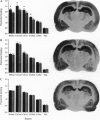Abstract
Several lines of evidence indicate that LTP in the hippocampus is associated with a change in the properties of postsynaptic glutamate receptors. In the present study, we used quantitative autoradiography to examine the binding properties of the alpha-amino-3-hydroxy-5-methyl-4-isoxazole-propionate (AMPA) and N-methyl-D-aspartate subclasses of glutamate receptors in frozen brain sections obtained from rats in which perforant-path LTP was induced in vivo. Induction of LTP resulted in a selective increase in [3H]AMPA binding in those hippocampal subfields receiving perforant-path axons. Increases in [3H]AMPA binding in dentate gyrus (stratum moleculare) were highly correlated with the magnitude of LTP recorded in this structure. Scatchard analyses of [3H]AMPA and 6-cyano-7-nitro-[3H]quinoxaline-2,3-dione (an AMPA receptor antagonist) binding in the dentate gyrus indicated that LTP induction resulted in an increase in the number of AMPA receptor binding sites. No changes in the binding of 3H-labeled N-[1-(thienyl)cyclohexyl]piperidine (an N-methyl-D-aspartate receptor antagonist) were observed in any hippocampal subfield. These results suggest that a modification in postsynaptic AMPA receptors plays a role in the expression of synaptic enhancement following LTP induction in the hippocampus.
Full text
PDF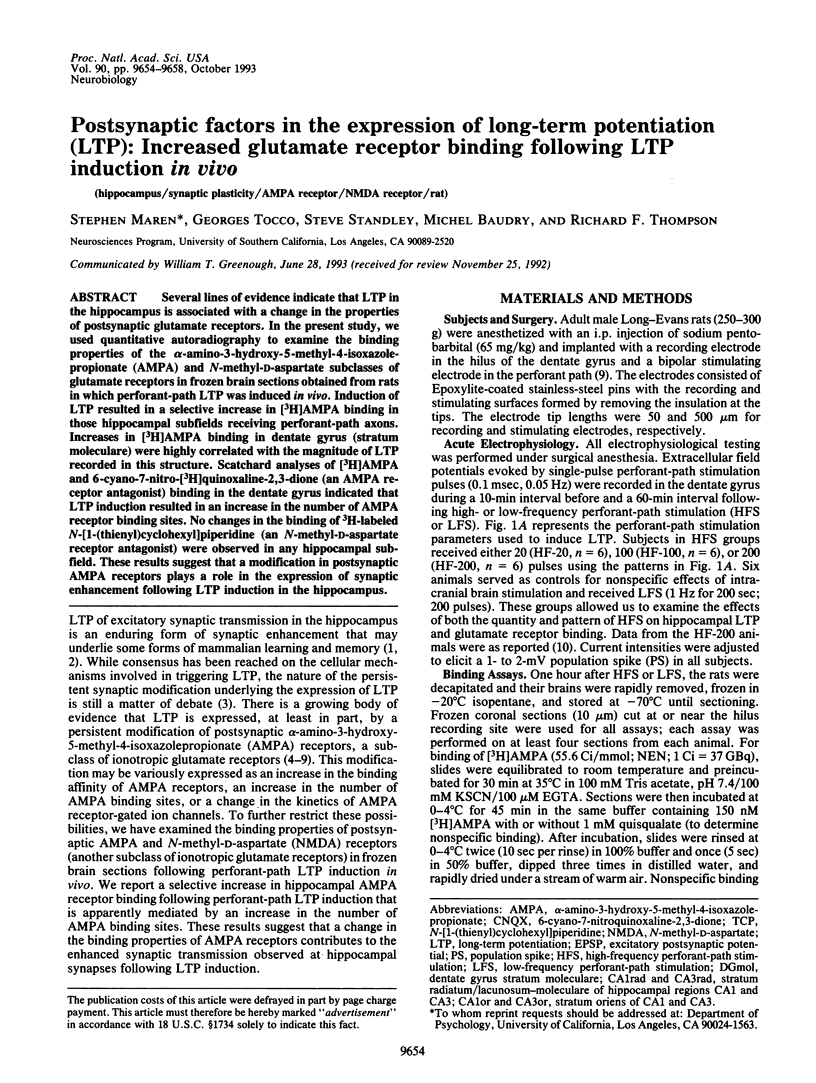
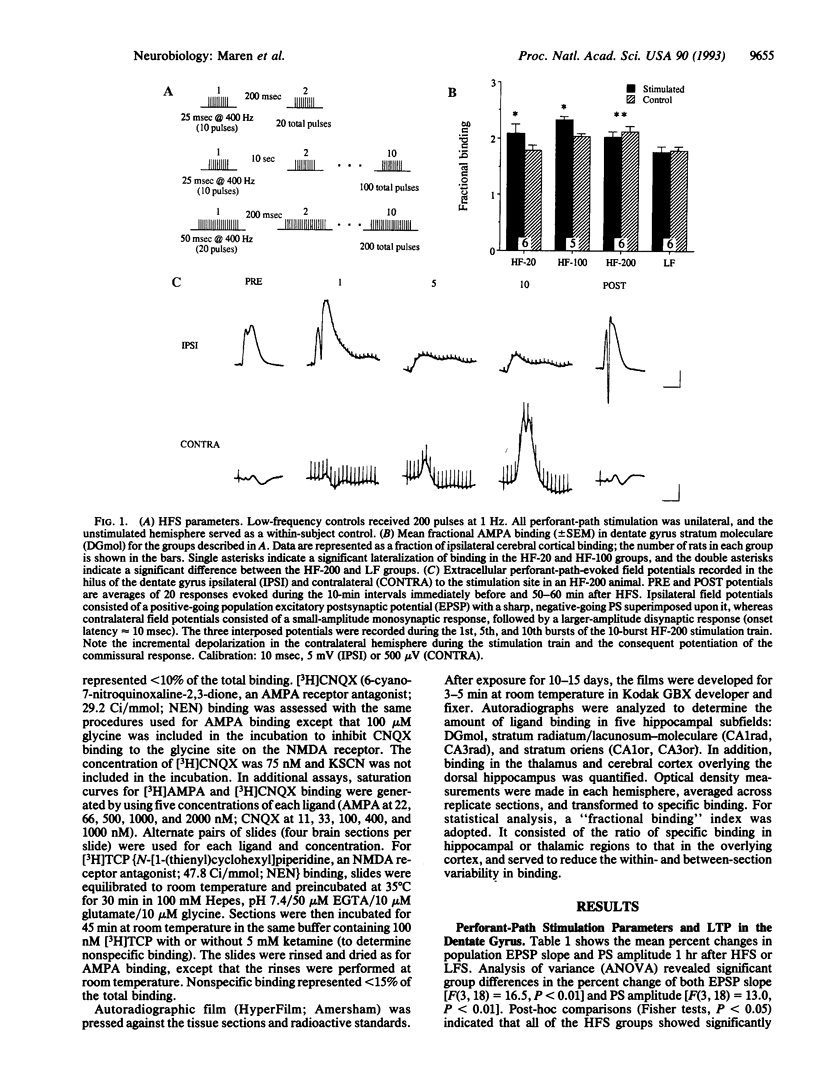
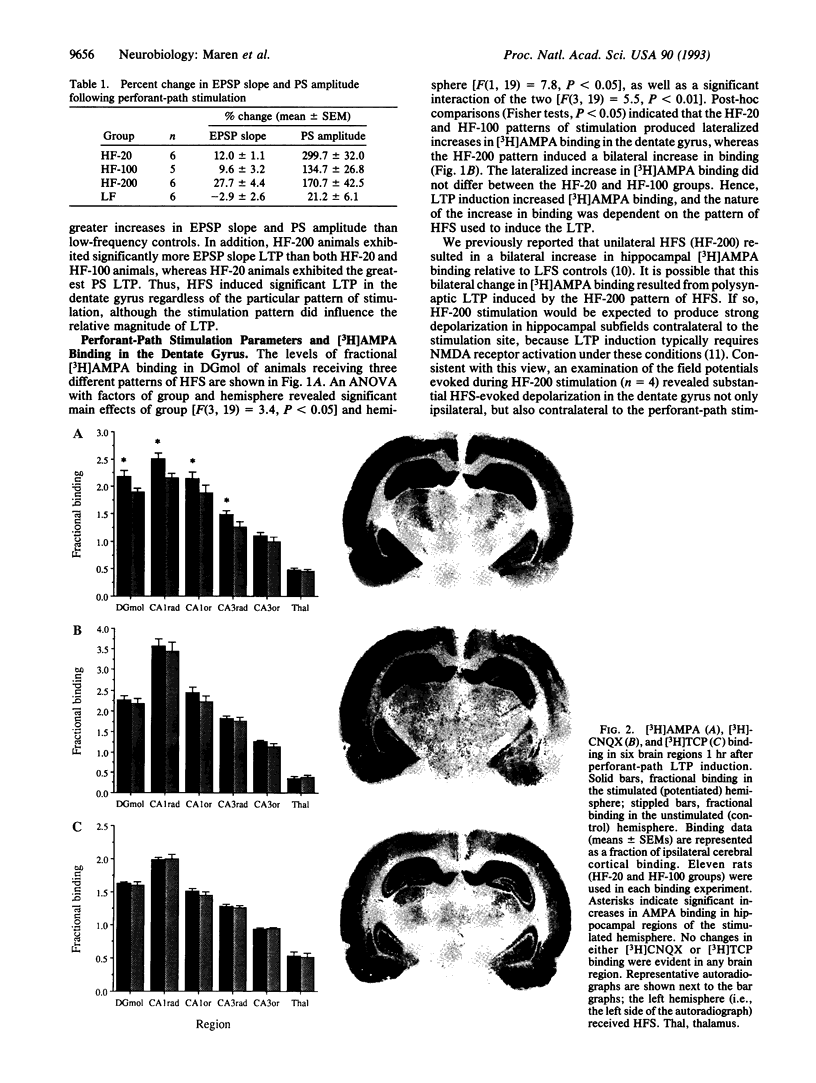
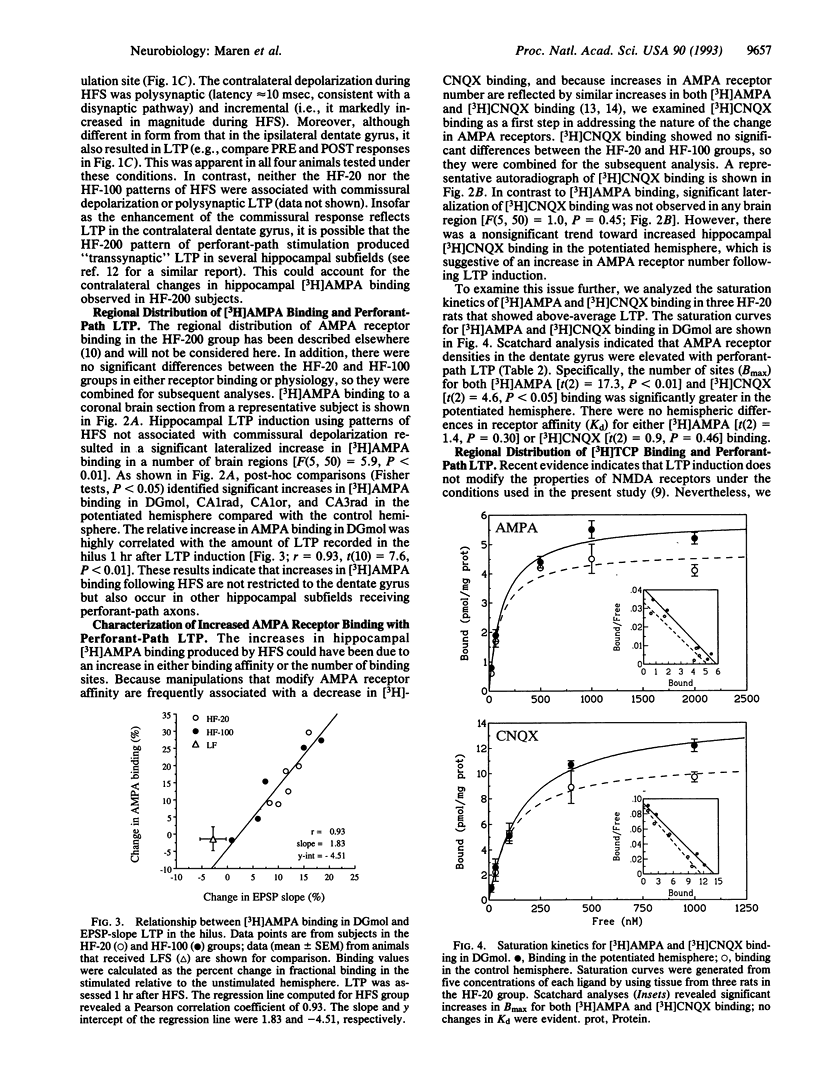
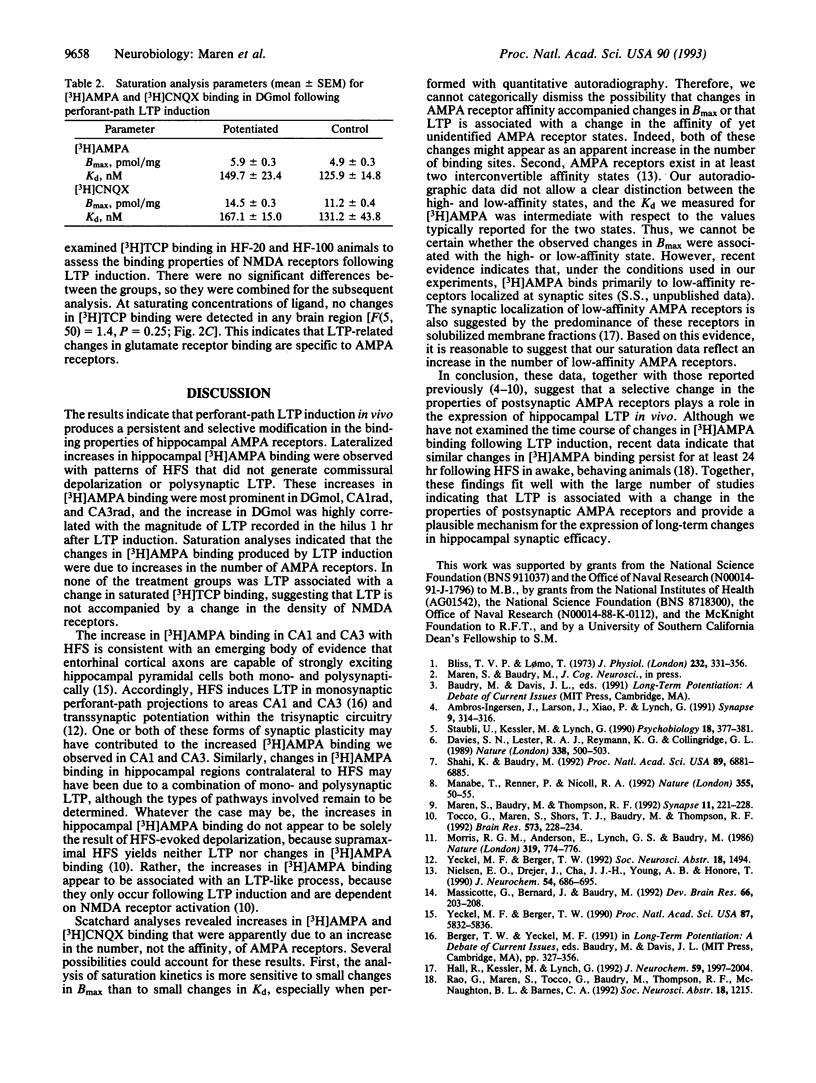
Images in this article
Selected References
These references are in PubMed. This may not be the complete list of references from this article.
- Ambros-Ingerson J., Larson J., Xiao P., Lynch G. LTP changes the waveform of synaptic responses. Synapse. 1991 Dec;9(4):314–316. doi: 10.1002/syn.890090406. [DOI] [PubMed] [Google Scholar]
- Bliss T. V., Lomo T. Long-lasting potentiation of synaptic transmission in the dentate area of the anaesthetized rabbit following stimulation of the perforant path. J Physiol. 1973 Jul;232(2):331–356. doi: 10.1113/jphysiol.1973.sp010273. [DOI] [PMC free article] [PubMed] [Google Scholar]
- Davies S. N., Lester R. A., Reymann K. G., Collingridge G. L. Temporally distinct pre- and post-synaptic mechanisms maintain long-term potentiation. Nature. 1989 Apr 6;338(6215):500–503. doi: 10.1038/338500a0. [DOI] [PubMed] [Google Scholar]
- Hall R. A., Kessler M., Lynch G. Evidence that high- and low-affinity DL-alpha-amino-3-hydroxy-5-methylisoxazole-4-propionic acid (AMPA) binding sites reflect membrane-dependent states of a single receptor. J Neurochem. 1992 Dec;59(6):1997–2004. doi: 10.1111/j.1471-4159.1992.tb10086.x. [DOI] [PubMed] [Google Scholar]
- Manabe T., Renner P., Nicoll R. A. Postsynaptic contribution to long-term potentiation revealed by the analysis of miniature synaptic currents. Nature. 1992 Jan 2;355(6355):50–55. doi: 10.1038/355050a0. [DOI] [PubMed] [Google Scholar]
- Maren S., Baudry M., Thompson R. F. Effects of the novel NMDA receptor antagonist, CGP 39551, on field potentials and the induction and expression of LTP in the dentate gyrus in vivo. Synapse. 1992 Jul;11(3):221–228. doi: 10.1002/syn.890110307. [DOI] [PubMed] [Google Scholar]
- Massicotte G., Bernard J., Baudry M. Postnatal changes in AMPA receptor regulation by phospholipase A2 treatment of synaptic membranes: temporally differential effects on agonist and antagonist binding. Brain Res Dev Brain Res. 1992 Apr 24;66(2):203–208. doi: 10.1016/0165-3806(92)90081-7. [DOI] [PubMed] [Google Scholar]
- Morris R. G., Anderson E., Lynch G. S., Baudry M. Selective impairment of learning and blockade of long-term potentiation by an N-methyl-D-aspartate receptor antagonist, AP5. 1986 Feb 27-Mar 5Nature. 319(6056):774–776. doi: 10.1038/319774a0. [DOI] [PubMed] [Google Scholar]
- Nielsen E. O., Drejer J., Cha J. H., Young A. B., Honoré T. Autoradiographic characterization and localization of quisqualate binding sites in rat brain using the antagonist [3H]6-cyano-7-nitroquinoxaline-2,3-dione: comparison with (R,S)-[3H]alpha-amino-3-hydroxy-5-methyl-4-isoxazolepropionic acid binding sites. J Neurochem. 1990 Feb;54(2):686–695. doi: 10.1111/j.1471-4159.1990.tb01925.x. [DOI] [PubMed] [Google Scholar]
- Shahi K., Baudry M. Increasing binding affinity of agonists to glutamate receptors increases synaptic responses at glutamatergic synapses. Proc Natl Acad Sci U S A. 1992 Aug 1;89(15):6881–6885. doi: 10.1073/pnas.89.15.6881. [DOI] [PMC free article] [PubMed] [Google Scholar]
- Tocco G., Maren S., Shors T. J., Baudry M., Thompson R. F. Long-term potentiation is associated with increased [3H]AMPA binding in rat hippocampus. Brain Res. 1992 Feb 28;573(2):228–234. doi: 10.1016/0006-8993(92)90767-4. [DOI] [PubMed] [Google Scholar]
- Yeckel M. F., Berger T. W. Feedforward excitation of the hippocampus by afferents from the entorhinal cortex: redefinition of the role of the trisynaptic pathway. Proc Natl Acad Sci U S A. 1990 Aug;87(15):5832–5836. doi: 10.1073/pnas.87.15.5832. [DOI] [PMC free article] [PubMed] [Google Scholar]



